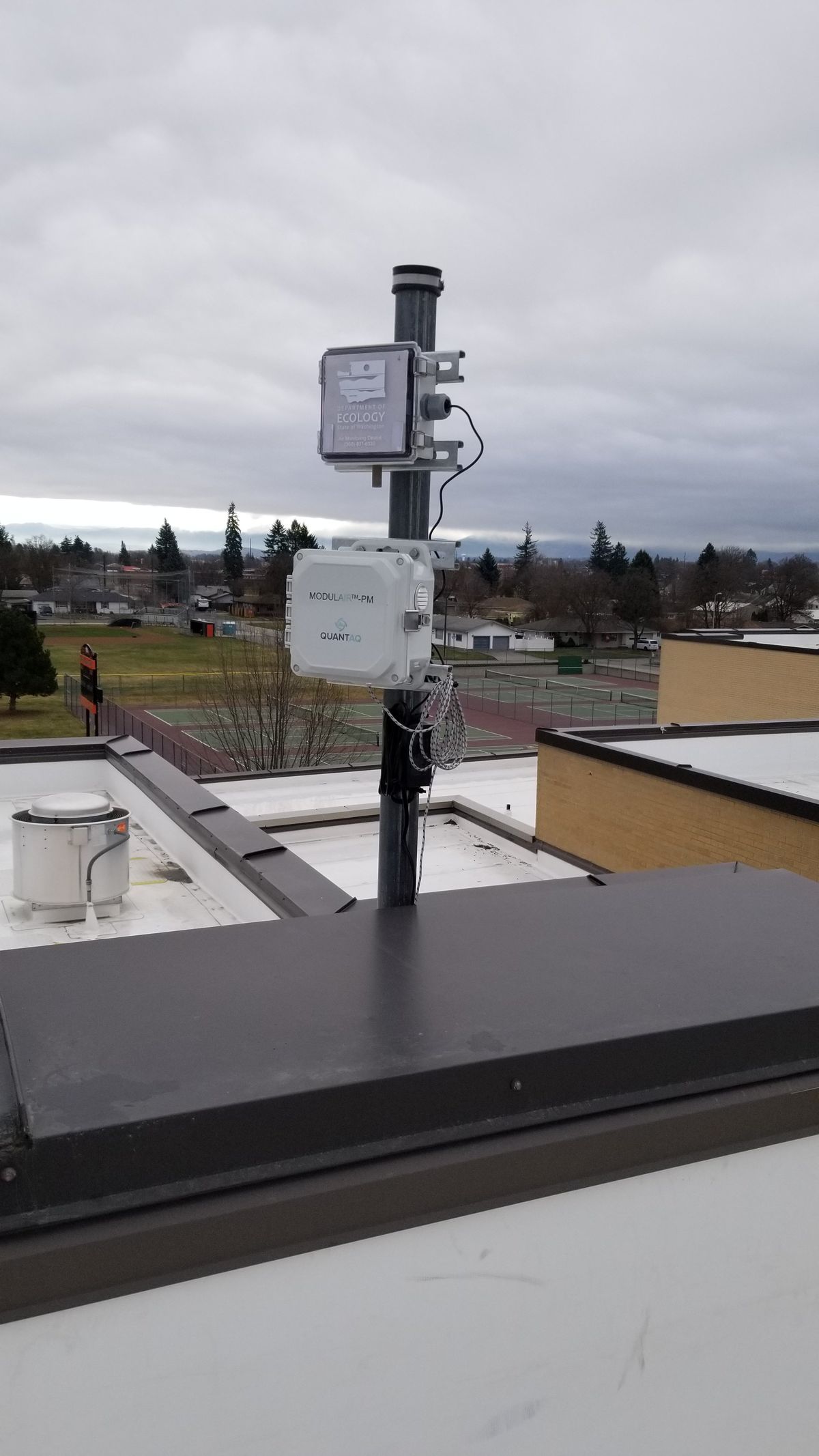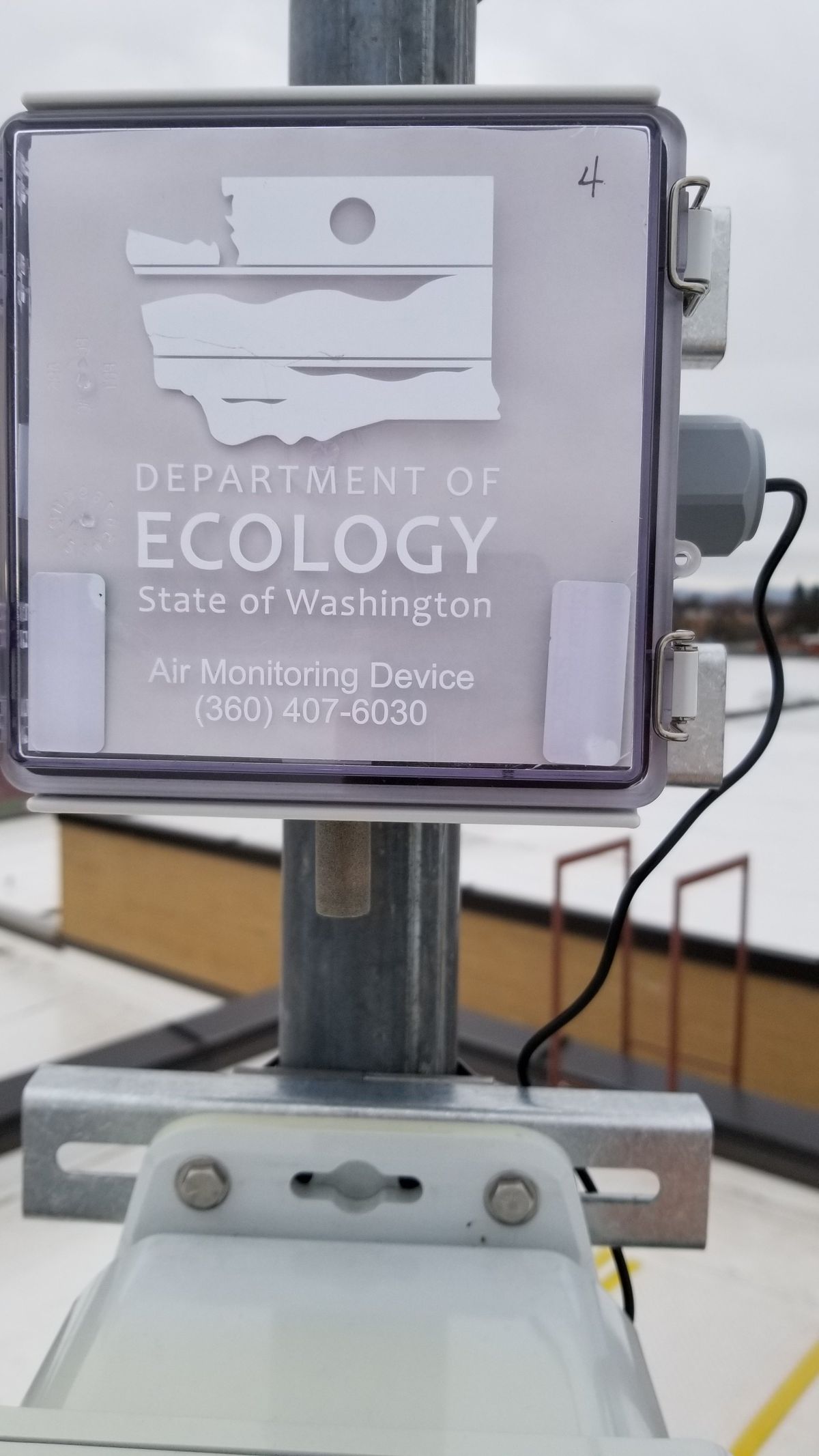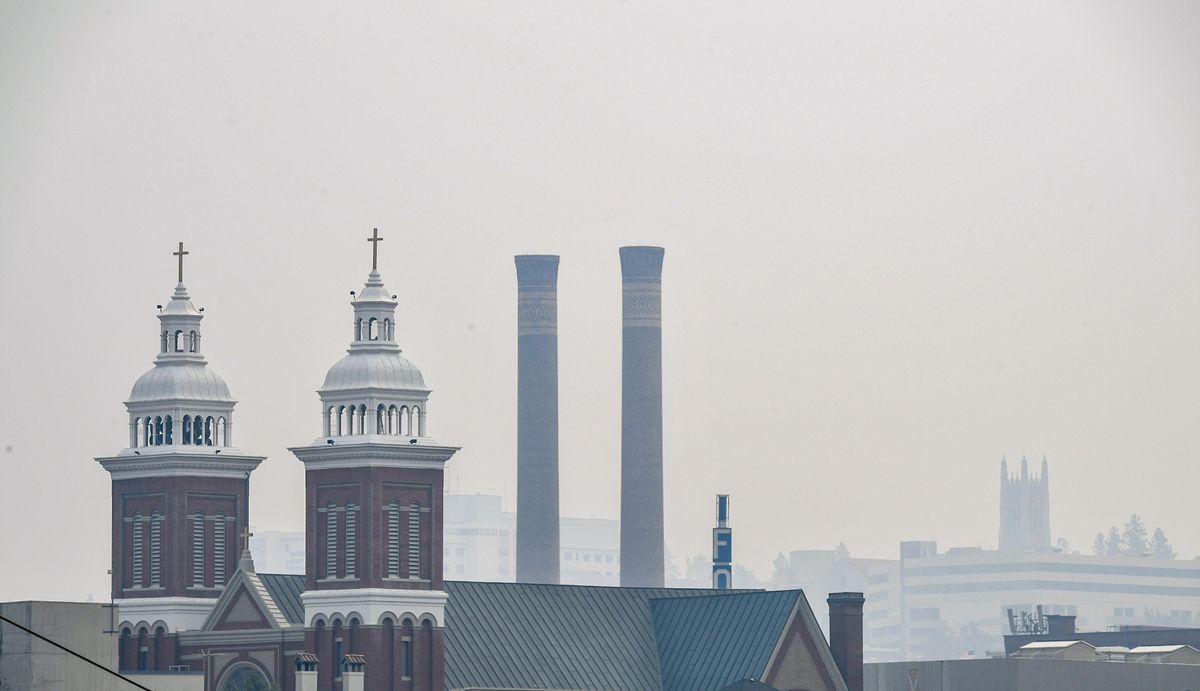New air quality sensors arrive in Spokane, part of state effort to combat pollution
Wildfire smoke shrouds the steeples atop the Cathedral of Our Lady of Lourdes, left, the Steam Plant smoke stacks, the Fox Theater sign, and the Cathedral of St. John the Evangelist, right, on Aug. 2, 2021, in Spokane. (DAN PELLE/THE SPOKESMAN-REVIEW)
Spokane County residents will soon be able to know how polluted the air in their own neighborhood is in real time.
The Washington Department of Ecology is in the process of installing 11 new air quality sensors in Spokane and Spokane Valley that are designed to monitor fine particle pollution in the air, as part of the department’s efforts to bolster the state’s air monitoring network.
Spokane is one of 16 towns, cities and communities where 50 of the SensWA sensors will be installed; all have been identified by the department as areas highly impacted by air pollution.
Unlike other monitoring stations in the region that measure different chemicals, particulate sizes and more, the small, lightweight devices are designed to only measure the amount of PM2.5 in the air, which stands for particulate matter smaller than 2.5 micrometers.
“We’ll have these sensors in some neighborhoods where we haven’t monitored before, so it’s going to be a denser network of monitors to show the variability of PM2.5 across the urban area,” said Mark Rowe, monitoring section manager for the Spokane Regional Clean Air Agency.
The particles, smaller than a strand of hair, are thrown into the air most commonly by wood burning stoves, wildfires and vehicle emissions. When the particles are inhaled, they can travel deep into the respiratory tract, penetrate the lungs and even the bloodstream, where they can cause short- and long-term health problems.
Chronic exposure to fine particle pollution can increase the risks of strokes, coronary heart disease and death, according to the American Lung Association.
A 2023 report on the department’s initiative said residents of the greater Spokane area may be more vulnerable to the effects of air pollution due to high rates of poverty and unemployment, as well as a lack of affordable housing. The region also experiences higher rates of asthma, chronic obstructive pulmonary disease and a lower life expectancy than other parts of the state.
“For us, they identified PM2.5 as the main concern,” Rowe said. “The Spokane urban area’s in a valley, kind of a bowl, so they were expecting that we’d get some buildup of pollution in the wintertime, late fall.”
Central Spokane, northeast Spokane and the industrial area in northern Spokane Valley were identified as the most likely overburdened and underprivileged areas, in part because of their proximity to pollution sources like roadways, railways and industrial sites.
Four of the sensors are already up and running in Spokane Valley: at East Valley High School, Trent Elementary School, West Valley High School and The Hive.
Spokane Regional Clean Air Agency spokeswoman Lisa Woodard said in addition to providing current conditions, the data collected by the sensors will be used to provide two-day air quality forecasts, send residents alerts on measures to take when needed and identify areas of concern.
The sensors will also help the state evaluate the effectiveness of air pollution control strategies called for by the Climate Commitment Act, said Department of Ecology spokeswoman Susan Woodward.
Funding for the sensors comes from the state’s carbon auctions, the same pool of money that will be put toward efforts to combat pollution and improve air quality in those communities down the road.
“It’s a multiyear and multiprong approach,” Woodward said. “And a challenging one at that, for the state and communities to take on.”
Expanding the monitoring network and implementing the sensors is phase one. Gathering and evaluating the data they collect is phase two, and using that information to develop strategies and implement solutions would be the final step, Woodward said.
The department is preparing to launch a grant program later this year that will help individuals and organizations develop some of those solutions in their own communities. Woodward said there will be around $10 million in grant funding available.
“Every step along the way, we want to engage with communities,” Woodward said.
In addition to town halls and tabling events in the 16 towns and cities identified as overburdened, the department has launched a survey to hear from those communities on how they’ve been affected and what issues they’d like to see addressed.
For the Spokane area, Woodard said the impact of the sensors could be more immediate.
Unlike wildfire smoke that tends to saturate the air over a wide area, other pollutant sources can be centralized in a specific neighborhood. Residents will be able to get hyperlocalized data, which will help them take necessary precautions when the air quality is unhealthy or hazardous.
“It will be interesting to see where some of the hotspots that might pop up are,” Woodward said.


